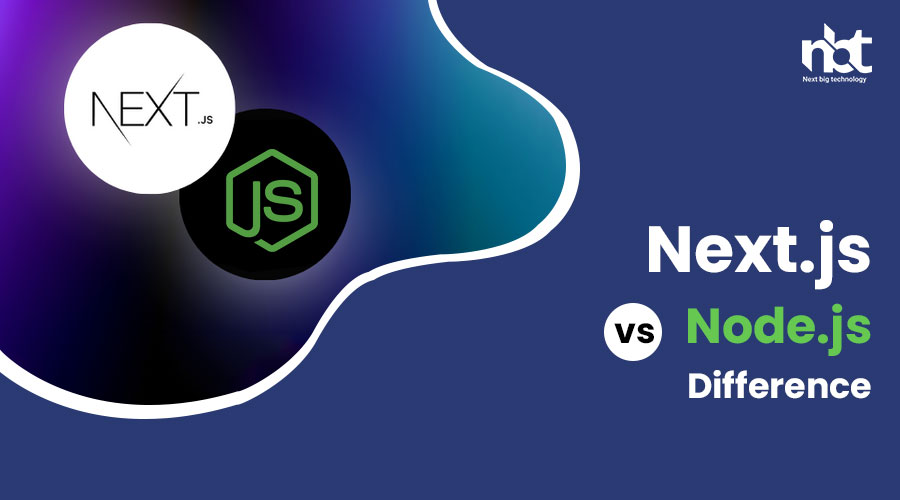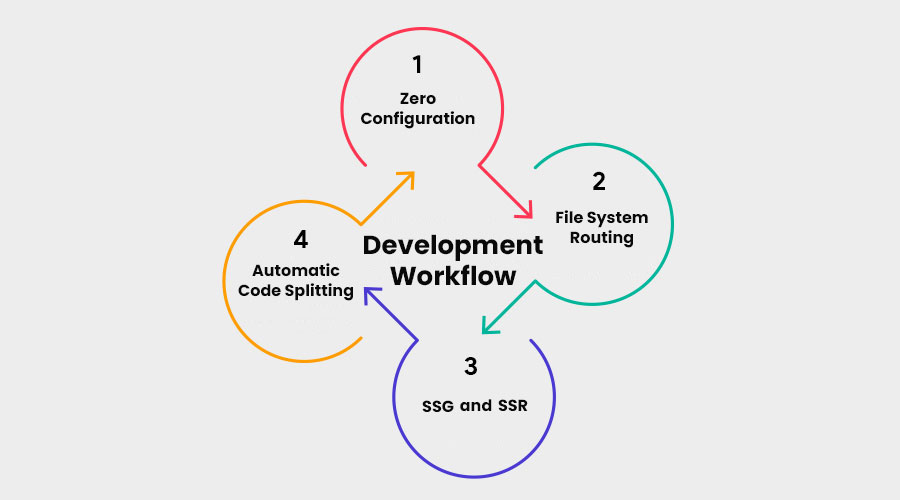Table of Contents
Introduction to Next.js and Node.js
Are you looking to delve into the world of web development but feeling overwhelmed by the plethora of tools and frameworks available? Fear not! In this article, we’ll take a beginner-friendly journey into the realms of Next.js and Node.js, two powerful technologies that are revolutionizing the way we build web applications.
Understanding Node.js: Before we dive into Next.js, let’s get acquainted with Node.js. Node.js is an open-source, cross-platform JavaScript runtime environment that executes JavaScript code outside of a web browser. In simpler terms, it allows you to run JavaScript on the server side, enabling you to build scalable and efficient back-end applications.
Node.js utilizes an event-driven, non-blocking I/O model, making it lightweight and efficient for handling concurrent connections. This asynchronous nature is particularly advantageous for applications requiring high concurrency, such as real-time chat applications or streaming services.
Introduction to Next.js: Now that we have a basic understanding of Node.js, let’s introduce Next.js. Next.js is a React framework that enables server-side rendering (SSR), static site generation (SSG), and client-side rendering (CSR) of React applications. It provides developers with a robust and feature-rich environment for building modern web applications.
One of the key advantages of Next.js is its simplicity and ease of use. With built-in support for routing, API routes, and server-side rendering, developers can focus more on building features rather than configuring complex setups. Additionally, Next.js offers excellent performance out of the box, thanks to its optimized rendering and caching mechanisms.
The Benefits of Using Next.js and Node.js Together: Combining Next.js with Node.js can unlock a multitude of benefits for developers. By leveraging the power of Node.js on the server side, Next.js can deliver dynamic content efficiently while ensuring fast load times and improved SEO performance. Moreover, the seamless integration between Next.js and Node.js allows for smooth data fetching, authentication, and state management, providing a cohesive development experience.
Furthermore, the flexibility of Node.js enables developers to extend Next.js applications with custom server-side logic, middleware, and third-party integrations. Whether you’re building a small-scale website or a large-scale enterprise application, the synergy between Next.js and Node.js empowers developers to create robust and scalable solutions tailored to their specific requirements.
Getting Started with Next.js and Node.js: Ready to start your journey with Next.js and Node.js? Here’s a quick guide to get you started:
- Install Node.js: Begin by installing Node.js on your machine. You can download the latest version from the official Node.js website and follow the installation instructions.
- Create a Next.js Project: Use the
create-next-appcommand-line tool to bootstrap a new Next.js project. This will set up the necessary files and dependencies to get you started quickly. - Explore Next.js Features: Take some time to explore the features and capabilities of Next.js, such as routing, data fetching, and server-side rendering. The Next.js documentation provides comprehensive guides and examples to help you understand the framework better.
- Integrate Node.js Backend: Once you’re comfortable with Next.js, consider integrating a Node.js backend to handle server-side logic, database operations, and other backend tasks. You can use frameworks like Express.js or Nest.js to build your backend APIs and services.
- Deploy Your Application: Finally, deploy your Next.js and Node.js application to a hosting provider of your choice. Platforms like Vercel, Heroku, or AWS offer seamless deployment options for Next.js and Node.js applications.
Deciphering Node.js: A Runtime Environment for JavaScript
In the realm of web development, Node.js has emerged as a powerful tool, revolutionizing the way developers build and execute server-side applications using JavaScript. But what exactly is Node.js, and how does it function as a runtime environment for JavaScript? Let’s embark on a journey to decipher Node.js and explore its intricacies.
Understanding Node.js:
At its core, Node.js is an open-source, cross-platform JavaScript runtime environment that executes JavaScript code outside of a web browser. Created by Ryan Dahl in 2009, Node.js leverages the V8 JavaScript engine, developed by Google for its Chrome browser, to execute JavaScript code on the server-side. This enables developers to use JavaScript to write server-side scripts, allowing for seamless synchronization between client and server.
Key Features of Node.js:
- Asynchronous and Event-Driven: One of Node.js’s defining features is its asynchronous, event-driven architecture. This means that Node.js operates on a single-threaded event loop, allowing it to handle multiple concurrent connections without blocking the execution of other tasks. As a result, Node.js excels in building highly scalable and efficient applications, particularly those requiring real-time communication.
- NPM (Node Package Manager): Node.js comes bundled with npm, the largest ecosystem of open-source libraries and tools for JavaScript development. With npm, developers can easily install, manage, and share reusable code modules, significantly accelerating the development process and fostering collaboration within the community.
- Non-Blocking I/O: Node.js utilizes non-blocking, asynchronous I/O operations, enabling it to handle a large number of concurrent connections efficiently. This non-blocking nature ensures that Node.js applications remain responsive and can scale to meet the demands of high-traffic environments.
- Cross-Platform Compatibility: Node.js is designed to run on various operating systems, including Windows, macOS, and Linux, making it highly versatile and accessible to developers regardless of their preferred environment.
Use Cases of Node.js:
Node.js finds applications in a wide range of scenarios, including:
- Web Application Development: Node.js is ideal for building fast, scalable web applications, particularly those requiring real-time data processing and communication, such as chat applications and collaborative tools.
- API Development: Node.js simplifies the process of building robust APIs (Application Programming Interfaces), enabling seamless communication between different components of a web application.
- Microservices Architecture: Node.js’s lightweight and scalable nature makes it well-suited for implementing microservices architectures, allowing developers to break down complex applications into smaller, manageable services.
- IoT (Internet of Things): With its efficient handling of asynchronous I/O operations, Node.js is increasingly being used in IoT applications for data processing and device communication.
Architectural Overview: Next.js vs Node.js
In the dynamic realm of web development, choosing the right framework is akin to selecting the perfect blueprint for constructing a digital masterpiece. Among the myriad of options available, Next.js and Node.js stand out as formidable contenders, each offering distinct architectural paradigms. Let’s embark on a journey to unravel the intricate tapestry of Next.js and Node.js, dissecting their architectures to understand their unique strengths and applications.
Next.js: The Pinnacle of React Frameworks:
Next.js, built upon the robust foundation of React.js, emerges as a powerful framework tailored for building server-rendered React applications. It seamlessly blends the prowess of React with the convenience of server-side rendering, empowering developers to craft highly performant web experiences with ease.
Architectural Overview: At its core, Next.js introduces the concept of pre-rendering, where pages are generated at build time or request time, resulting in lightning-fast loading speeds and improved SEO performance. Leveraging server-side rendering, Next.js dynamically generates HTML on each request, ensuring that content is readily available to search engine crawlers, thus enhancing discoverability.
Next.js architecture revolves around the notion of a hybrid approach, seamlessly transitioning between server-side rendering and client-side rendering based on the context. This versatility enables developers to strike an optimal balance between performance and interactivity, catering to diverse project requirements.
Furthermore, Next.js fosters a modular architecture, allowing developers to encapsulate logic within reusable components, thereby promoting code reusability and maintainability. Its integrated routing system simplifies navigation, facilitating the creation of complex multi-page applications effortlessly.
Node.js: The Backbone of Real-time Applications:
Contrary to Next.js, Node.js transcends the boundaries of a traditional web framework, serving as a runtime environment for executing JavaScript code on the server-side. Renowned for its event-driven architecture and non-blocking I/O operations, Node.js excels in building scalable, real-time applications.
Architectural Overview: Node.js operates on a single-threaded event loop model, where asynchronous operations are delegated to worker threads, ensuring optimal resource utilization and responsiveness. This architecture enables Node.js to handle a high volume of concurrent connections efficiently, making it an ideal choice for building applications requiring real-time communication, such as chat applications and online gaming platforms.
Moreover, Node.js fosters a modular architecture facilitated by its extensive ecosystem of npm packages, empowering developers to extend functionality seamlessly. Its non-blocking I/O paradigm eliminates the need for traditional threading models, simplifying code maintenance and enhancing scalability.
Comparative Analysis: While both Next.js and Node.js share JavaScript as their foundational language, they diverge significantly in terms of architectural approach and application scenarios. Next.js shines in scenarios demanding server-side rendering and SEO optimization, catering to content-heavy websites and blogs.
On the other hand, Node.js excels in building real-time applications requiring high concurrency and low-latency communication, such as chat applications, streaming platforms, and IoT solutions. Its event-driven architecture and non-blocking I/O operations make it a preferred choice for handling asynchronous tasks efficiently.
Server-Side Rendering (SSR) in Next.js vs Node.js
In the dynamic realm of web development, Server-Side Rendering (SSR) stands as a pivotal technique for enhancing user experience and optimizing performance. Two prominent frameworks, Next.js and Node.js, offer distinctive approaches to SSR, each with its unique strengths and applications. Let’s delve deeper into the comparative analysis of SSR in Next.js versus Node.js.
Next.js SSR: Next.js, a popular React framework, is renowned for its seamless SSR capabilities out of the box. Leveraging React’s component-based architecture, Next.js empowers developers to effortlessly implement SSR without extensive configuration. By pre-rendering pages on the server before sending them to the client, Next.js ensures swift initial loading and enhanced SEO performance.
Advantages of SSR in Next.js:
- Improved Performance: Next.js optimizes load times by serving pre-rendered HTML content, reducing time to interactive (TTI) and enhancing perceived performance.
- SEO Friendliness: Search engine crawlers can easily index pre-rendered content, leading to better discoverability and ranking on search engine results pages (SERPs).
- Dynamic Data Fetching: Next.js facilitates dynamic data fetching during server-side rendering, enabling seamless integration with APIs and databases for real-time updates.
- Effortless Integration: With Next.js, SSR seamlessly integrates with client-side React components, providing a cohesive development experience.
Node.js SSR: Contrary to Next.js, Node.js is a runtime environment for executing JavaScript code outside of a web browser. While it offers SSR capabilities, Node.js requires more manual configuration and customization compared to Next.js. Developers often utilize frameworks like Express.js alongside Node.js to implement SSR effectively.
Advantages of SSR in Node.js:
- Flexibility and Customization: Node.js provides developers with unparalleled flexibility to tailor SSR implementations according to specific project requirements.
- Full-stack Capabilities: With Node.js, SSR is just one facet of a broader full-stack development ecosystem, enabling seamless integration with various backend services and databases.
- Community Support: Node.js boasts a vast and active developer community, offering a plethora of libraries, modules, and resources to streamline SSR implementations.
- Scalability: Node.js excels in handling concurrent requests, making it ideal for SSR applications requiring high scalability and performance under heavy loads.
Client-Side Rendering (CSR) in Next.js vs Node.js
In the realm of web development, choosing the right technology stack is crucial for achieving optimal performance and user experience. When it comes to client-side rendering (CSR), developers often find themselves deliberating between Next.js and Node.js. Both are popular choices, each with its own strengths and ideal use cases. Let’s delve into the comparison of Client-Side Rendering in Next.js versus Node.js to understand their differences and benefits.
Client-Side Rendering (CSR) A Quick Overview:
Before we dive into the comparison, let’s briefly outline what client-side rendering entails. In CSR, the browser loads a web page’s structure and content using JavaScript that executes in the client’s browser. This approach offers dynamic and interactive user experiences, as the content can be updated without needing to reload the entire page.
Next.js The Power of React with Server-Side Rendering (SSR):
Next.js, built on top of React, is renowned for its seamless integration of server-side rendering (SSR) and client-side rendering capabilities. SSR provides the initial render of the webpage on the server, delivering faster load times and better SEO performance by serving fully-rendered HTML to the client.
In Next.js, CSR is efficiently managed through its dynamic routing system, enabling developers to choose between SSR and CSR on a page-by-page basis. This flexibility is advantageous for applications requiring a mix of static and dynamic content. Additionally, Next.js offers built-in features like automatic code splitting and prefetching, further enhancing performance.
Node.js: A Versatile Backend Framework:
Node.js, on the other hand, is a versatile backend framework based on JavaScript, offering excellent scalability and performance. While it’s not inherently designed for client-side rendering like Next.js, Node.js can still facilitate CSR through frameworks like Express.js and libraries like React or Vue.js.
In a Node.js environment, CSR is typically handled through API calls to the server, fetching data asynchronously and updating the DOM accordingly. While this approach can be powerful, it may require more manual configuration compared to the seamless SSR and CSR integration provided by Next.js.
Choosing the Right Tool for the Job:
When deciding between Next.js and Node.js for client-side rendering, it ultimately boils down to the specific requirements of your project.
- Choose Next.js if you prioritize performance, SEO-friendliness, and seamless SSR/CSR integration. Next.js is an excellent choice for applications requiring dynamic content and complex user interactions while maintaining optimal load times.
- Opt for Node.js if you need a versatile backend framework with the flexibility to implement CSR alongside other server-side functionalities. Node.js excels in scenarios where you require full control over the server environment and backend logic.
Routing and Navigation: Next.js vs Node.js Approach
In the dynamic world of web development, efficient routing and navigation are pivotal for creating seamless user experiences. Two popular frameworks that developers often turn to for handling routing are Next.js and Node.js. While both serve as powerful tools in their own right, understanding the nuances of their approaches to routing is crucial for making informed decisions. Let’s delve into the comparison between Next.js and Node.js in the realm of routing and navigation.
Next.js: The Integrated Solution Next.js, a React framework, has gained significant traction due to its opinionated approach towards structuring React applications. One of its standout features is its integrated routing system, which simplifies the process of defining routes and handling navigation.
With Next.js, routing is inherently tied to the file system. Pages within the “pages” directory automatically become routes, eliminating the need for manual configuration. This convention-over-configuration approach reduces boilerplate code and streamlines the development process.
Moreover, Next.js offers dynamic routing capabilities, allowing for the creation of dynamic routes based on parameters. This flexibility is particularly beneficial for applications with complex routing requirements, such as e-commerce platforms or content management systems.
Additionally, Next.js provides built-in support for code splitting, prefetching, and client-side navigation, enhancing performance and user experience. The framework’s compatibility with server-side rendering (SSR) and static site generation (SSG) further solidifies its position as a versatile solution for building modern web applications.
Node.js: The Customizable Foundation On the other hand, Node.js, a runtime environment for executing JavaScript code server-side, offers developers more flexibility and control over routing implementation. While Node.js itself does not provide a built-in routing solution like Next.js, it empowers developers to choose from a myriad of routing libraries and frameworks, such as Express.js or Koa.js.
Node.js-based applications typically involve manual configuration of routes using these routing libraries. While this approach requires more initial setup compared to Next.js, it grants developers the freedom to tailor routing logic according to specific project requirements.
Furthermore, Node.js excels in scenarios where custom server logic or middleware is essential for handling routing complexities. Developers have the liberty to integrate authentication mechanisms, request validation, and error handling directly into their routing pipelines, ensuring robustness and security.
However, it’s worth noting that implementing server-side rendering or static site generation with Node.js requires additional setup and configuration compared to Next.js. Developers must carefully architect their applications to achieve optimal performance and scalability.
Data Fetching Strategies: Next.js vs Node.js Comparison
In the realm of web development, data fetching stands as a pivotal aspect determining the performance and efficiency of an application. With the emergence of powerful frameworks like Next.js and Node.js, developers are presented with versatile options for crafting robust applications. However, when it comes to data fetching strategies, how do these two technologies stack up against each other? Let’s delve into a comprehensive comparison between Next.js and Node.js in terms of their data fetching approaches.
Understanding Next.js:
Next.js, a popular React framework, provides an out-of-the-box solution for server-side rendering (SSR) and static site generation (SSG). It offers a streamlined development experience by seamlessly integrating client-side and server-side rendering capabilities. Next.js facilitates efficient data fetching through its built-in functions like getStaticProps and getServerSideProps.
- getStaticProps: This function enables pre-rendering of pages at build time. It fetches data during the build process, allowing for static optimization and faster page loads. Ideal for content that doesn’t frequently change.
- getServerSideProps: Unlike
getStaticProps, this function retrieves data on each request, making it suitable for dynamic content generation. It excels in scenarios where real-time data updates are crucial.
Exploring Node.js:
Node.js, on the other hand, is a runtime environment that executes JavaScript code outside of a web browser. It empowers developers to build scalable and high-performance server-side applications. With Node.js, data fetching strategies typically involve making HTTP requests to external APIs or querying databases directly.
- HTTP Requests: Node.js leverages libraries like Axios or Fetch API to perform HTTP requests asynchronously. This approach allows for fetching data from external APIs, making it versatile for integrating third-party services into applications.
- Database Queries: Node.js offers various database connectors such as MongoDB, PostgreSQL, or MySQL. Developers can execute queries to fetch data from databases directly. This method provides flexibility in managing data and executing complex queries as per application requirements.
Comparison:
- Performance: Next.js shines in performance with its optimized data fetching strategies, especially for static content. By pre-rendering pages, it minimizes server load and enhances user experience. Node.js, while efficient, may require additional optimization efforts to achieve similar performance levels.
- Flexibility: Node.js offers more flexibility in data fetching by supporting a wide range of databases and external APIs. Developers have greater control over how data is fetched and manipulated within the application.
- Ease of Use: Next.js streamlines the data fetching process with its integrated functions, simplifying development tasks. Developers familiar with React find it easy to adopt Next.js for server-side rendering needs. Node.js, while powerful, may have a steeper learning curve, especially for those new to JavaScript runtime environments.
- Real-time Updates: Next.js excels in scenarios where real-time updates are not a primary concern, thanks to its static and server-side rendering capabilities. For applications requiring continuous data updates, Node.js provides a more suitable environment with its ability to handle asynchronous operations efficiently.
Handling APIs and Backend Services in Next.js vs Node.js
In the realm of web development, choosing the right technology stack is crucial for building robust and efficient applications. When it comes to handling APIs and backend services, developers often find themselves torn between Next.js and Node.js. Both are powerful tools in their own right, but understanding their strengths and weaknesses is essential for making an informed decision. Let’s delve into the intricacies of each and see how they fare in this domain.
Next.js: Bridging Frontend and Backend Seamlessly Next.js has gained significant traction in recent years, primarily due to its ability to streamline the development process by seamlessly integrating frontend and backend functionalities. With its built-in API routes, Next.js simplifies the creation of backend services without the need for additional frameworks or configurations.
Handling APIs in Next.js is a breeze thanks to its intuitive API routing system. Developers can define API endpoints within their Next.js application, enabling them to fetch data from external sources or perform server-side operations effortlessly. Moreover, Next.js offers server-side rendering (SSR) out of the box, ensuring optimal performance and SEO-friendliness.
When it comes to scalability, Next.js shines bright. Its support for serverless deployment options like Vercel makes it easy to scale applications based on demand without worrying about infrastructure management. Additionally, Next.js provides excellent support for TypeScript, enabling developers to write type-safe code and catch errors early in the development process.
Node.js: Power and Flexibility Node.js, on the other hand, is renowned for its power and flexibility in building backend services. As an asynchronous event-driven framework, Node.js excels in handling concurrent requests and I/O operations, making it ideal for high-performance applications with heavy traffic loads.
In Node.js, developers have a plethora of libraries and frameworks at their disposal for handling APIs and backend services. Express.js, in particular, stands out as a popular choice for building RESTful APIs and web servers due to its minimalist design and robust features. With Express.js, developers have fine-grained control over routing, middleware, and request handling, allowing for highly customizable backend solutions.
One of the key advantages of Node.js is its vast ecosystem of npm packages, which provide ready-made solutions for a wide range of functionalities. Whether it’s authentication, database integration, or third-party API interactions, Node.js offers an extensive selection of modules to expedite development and reduce time-to-market.
Choosing the Right Tool for the Job: Ultimately, the choice between Next.js and Node.js depends on the specific requirements and objectives of your project. If you prioritize seamless frontend-backend integration, server-side rendering, and ease of deployment, Next.js emerges as an excellent option. On the other hand, if you seek ultimate flexibility, performance, and access to a vast ecosystem of libraries, Node.js might be the way to go.
Development Workflow and Tooling: Next.js vs Node.js
In the realm of web development, having the right tools and workflow can make a significant difference in efficiency and productivity. Two popular choices among developers are Next.js and Node.js, each offering its own set of features and advantages. Let’s delve into the comparison of their development workflows and tooling to help you make an informed decision for your next project.
Next.js:
Next.js is a React-based framework renowned for its simplicity and performance in building modern web applications. Its development workflow is characterized by its out-of-the-box features and conventions, designed to streamline the development process.
Development Workflow:
- Zero Configuration: Next.js comes with pre-configured settings, eliminating the need for manual setup and allowing developers to dive straight into coding.
- File System Routing: With Next.js, routing is intuitive and based on the file system structure, making navigation within the application straightforward.
- Static Site Generation (SSG) and Server-Side Rendering (SSR): Next.js offers SSG and SSR capabilities out of the box, enabling faster page loads and improved SEO.
- Automatic Code Splitting: The framework automatically splits code bundles, optimizing performance by loading only the necessary JavaScript for each page.
Tooling:
- Next.js CLI: The Next.js command-line interface provides developers with useful commands for tasks like creating a new project, running a development server, and building for production.
- Fast Refresh: Next.js incorporates Fast Refresh, enabling instant feedback during development by preserving the application state across edits.
- Comprehensive Documentation: Next.js boasts thorough documentation and a vibrant community, offering support and resources for developers at every skill level.
Node.js:
Node.js, on the other hand, is a runtime environment for executing JavaScript code outside the browser. While not a framework like Next.js, Node.js is a powerful tool for building server-side applications and APIs.
Development Workflow:
- Flexibility: Node.js provides developers with the flexibility to choose libraries and frameworks according to project requirements, offering a customizable development experience.
- NPM Ecosystem: Leveraging the extensive NPM (Node Package Manager) ecosystem, developers can easily integrate third-party modules and libraries into their projects, accelerating development.
- Event-Driven Architecture: Node.js utilizes an event-driven, non-blocking I/O model, enabling efficient handling of concurrent requests and scalability.
- Microservices Architecture: Node.js is well-suited for microservices architecture, allowing developers to build modular, scalable applications composed of small, independent services.
Tooling:
- Express.js: While not part of Node.js core, Express.js is a widely-used web application framework for Node.js, providing developers with robust features for building APIs and web applications.
- Debugger: Node.js comes with a built-in debugger, facilitating the debugging process by allowing developers to inspect variables, set breakpoints, and trace code execution.
- ESLint: Developers can use ESLint, a pluggable linting utility for JavaScript, to ensure code quality and adhere to coding standards.
- Docker: Node.js applications can be containerized using Docker, simplifying deployment and ensuring consistency across different environments.
Community and Ecosystem: Next.js vs Node.js
In the ever-evolving landscape of web development, choosing the right framework or runtime environment is crucial. Among the plethora of options available, two names stand out prominently: Next.js and Node.js. While both are integral to modern web development, they serve distinct purposes and possess unique characteristics. In this discourse, we delve into the community and ecosystem surrounding Next.js and Node.js, aiding developers in navigating the terrain and making informed decisions.
Community Dynamics: Community plays a pivotal role in the adoption and evolution of any technology. Next.js, with its rapidly growing community, has garnered significant attention in recent years. Developed by Vercel, Next.js benefits from strong support and active engagement from its creators and contributors. Its community-driven ethos fosters collaboration, knowledge-sharing, and continuous improvement. Developers seeking assistance or exploring innovative solutions can rely on the vibrant Next.js community forums, Discord channels, and GitHub repositories.
On the other hand, Node.js boasts one of the largest and most diverse developer communities in the realm of server-side JavaScript. Since its inception, Node.js has witnessed exponential growth, attracting developers from diverse backgrounds and industries. With an extensive array of resources, including forums, meetups, and online communities, Node.js empowers developers to leverage collective expertise and tackle complex challenges efficiently.
Ecosystem Exploration: The ecosystem surrounding a technology encompasses libraries, tools, plugins, and integrations that enhance its functionality and versatility. Next.js, built on top of React, inherits a rich ecosystem of React components, libraries, and tools. This synergy enables developers to seamlessly integrate Next.js with existing React projects and leverage a plethora of React-centric resources. Additionally, Next.js provides out-of-the-box support for server-side rendering (SSR), static site generation (SSG), and API routes, simplifying development workflows and enhancing performance.
Node.js, renowned for its scalability and flexibility, offers a vast ecosystem of npm packages catering to a myriad of use cases. From web servers and databases to microservices and IoT applications, Node.js empowers developers to build diverse and robust solutions effortlessly. Furthermore, the Node Package Manager (npm) facilitates easy dependency management and enables developers to discover, install, and share packages seamlessly.
Decision Dilemma: Choosing between Next.js and Node.js hinges on various factors, including project requirements, scalability needs, and developer proficiency. Next.js shines in scenarios necessitating server-side rendering, static site generation, and seamless integration with React-based projects. Its opinionated approach and intuitive APIs expedite development and foster code maintainability. Conversely, Node.js excels in building scalable, real-time applications and microservices, leveraging its asynchronous, event-driven architecture.
Top Next.js vs Node.js Development Companies
In the dynamic world of web development, choosing the right technology stack is crucial for building robust and scalable applications. Among the plethora of options available, Next.js and Node.js have emerged as leading contenders, each with its unique strengths and capabilities. As businesses seek to leverage these technologies for their projects, the need for skilled development teams becomes paramount. In this article, we delve into the top Next.js vs Node.js development companies, highlighting their expertise and distinguishing factors.
-
-
Next Big Technology:

Focus Area
- Mobile App Development
- App Designing (UI/UX)
- Software Development
- Web Development
- AR & VR Development
- Big Data & BI
- Cloud Computing Services
- DevOps
- E-commerce Development
Industries Focus
- Art, Entertainment & Music
- Business Services
- Consumer Products
- Designing
- Education
- Financial & Payments
- Gaming
- Government
- Healthcare & Medical
- Hospitality
- Information Technology
- Legal & Compliance
- Manufacturing
- Media
-
- XYZ Development Inc. Specializing in Node.js development, XYZ Development Inc. has carved a niche for itself in the competitive tech landscape. Leveraging the asynchronous nature of Node.js, they build high-performance, real-time applications that are scalable and efficient. Their expertise extends to microservices architecture, API development, and server-side scripting, making them a preferred choice for businesses seeking robust backend solutions.
- PQR Innovations PQR Innovations boasts expertise in both Next.js and Node.js development, offering end-to-end solutions tailored to client specifications. Their versatile team excels in building dynamic web applications that combine the best of both technologies, ensuring optimal performance and user experience. Whether it’s server-side rendering with Next.js or building RESTful APIs with Node.js, PQR Innovations delivers solutions that drive business growth.
- LMN Software Solutions With a focus on innovation and agility, LMN Software Solutions stands as a top contender in the Next.js vs Node.js debate. Their team of developers is proficient in utilizing the latest features of Next.js and Node.js to build responsive, feature-rich applications that exceed client expectations. From e-commerce platforms to complex enterprise solutions, they have a proven track record of delivering projects on time and within budget.
- EFG Digital Ventures EFG Digital Ventures prides itself on its commitment to excellence and customer satisfaction. As experts in both Next.js and Node.js development, they offer comprehensive services encompassing front-end and back-end development, as well as deployment and maintenance. Their collaborative approach, combined with a focus on emerging technologies, positions them as a reliable partner for businesses seeking innovative web solutions.
FAQs On Next.js vs Node.js Development
In the realm of web development, choosing the right technology stack is crucial for the success of any project. Two popular options that often spark debate are Next.js and Node.js. While both are JavaScript-based and serve as robust frameworks, they cater to different aspects of web development. To help you navigate through the confusion, let’s delve into some frequently asked questions regarding Next.js vs Node.js development.
- What is Next.js, and how does it differ from Node.js?
- Next.js is a React framework used for building server-rendered applications, offering features like automatic code splitting, routing, and server-side rendering (SSR).
- On the other hand, Node.js is a runtime environment that executes JavaScript code outside of a web browser, enabling developers to build scalable network applications.
- When should I choose Next.js over Node.js?
- Next.js is ideal for building complex, dynamic web applications that require server-side rendering for improved performance and SEO.
- Choose Next.js if you prioritize a fast, SEO-friendly website with enhanced user experience and smoother navigation.
- What are the advantages of using Next.js?
- Next.js simplifies the development process by providing built-in routing, server-side rendering, and automatic code splitting.
- It offers improved performance, as pages are pre-rendered and served as static HTML, resulting in faster load times and better SEO rankings.
- Next.js supports hot module replacement (HMR), allowing developers to see changes in real-time without manual page refreshing.
- When is Node.js more suitable than Next.js?
- Node.js is preferable for building lightweight, data-intensive applications, such as APIs, real-time chat applications, and streaming services.
- Choose Node.js if you prioritize scalability, asynchronous I/O operations, and flexibility in designing backend systems.
- What are the key advantages of using Node.js?
- Node.js excels in handling concurrent connections and non-blocking I/O operations, making it well-suited for building scalable, real-time applications.
- It boasts a vast ecosystem of libraries and packages, allowing developers to extend functionality and streamline development processes.
- Node.js facilitates the creation of microservices architecture, enabling developers to break down applications into smaller, manageable components for better scalability and maintenance.
- Can I use Next.js with Node.js?
- Yes, Next.js runs on top of Node.js. It utilizes Node.js for server-side rendering and backend functionality while providing additional features for front-end development.
- Which framework offers better performance: Next.js or Node.js?
- Comparing performance between Next.js and Node.js is like comparing apples to oranges. Next.js focuses on front-end rendering and optimization, while Node.js primarily serves as a backend runtime environment. Both excel in their respective domains and can be used together to build powerful, full-stack applications.
- Is there a learning curve associated with Next.js and Node.js?
- Both Next.js and Node.js require a solid understanding of JavaScript fundamentals. However, Next.js abstracts away many complexities associated with server-side rendering and routing, making it more accessible for React developers. Node.js, on the other hand, might have a steeper learning curve, especially for beginners who are new to asynchronous programming concepts.
Thanks for reading our post “Next.js vs Node.js Difference”. Please connect with us to learn more about Next.js vs Node.js Development.















